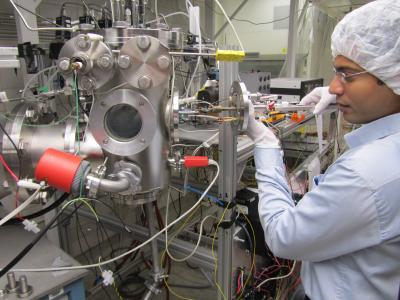If you have traveled, you know that in some other countries the voltage used in homes and businesses are different than where you live. But not the type of electricity; all countries use alternating current. Yet a lot of appliances and devices then convert it to DC.
In the early days of electricity, the war was on between alternating current and direct, with Westinghouse (and Tesla) advocating the former and Thomas Edison standardizing on the latter. The reason alternating current won is because people didn't want power plants in their neighborhoods and banks of batteries in their homes. And centralized power without extreme line loss meant high frequency, requiring transformers to step the current up and then back down at homes.
But it's the 21st century and DC may merit a rethink, because onsite generation of electricity using photovoltaic (PV) solar cells could one day mean the 60 year dream of self-powered homes is a reality.
Silicon is the second most abundant element in Earth's crust. Due to lack of functional reliability and the resulting lack of economic bankability, PV systems employing solar concentrators haven't made a significant impact worldwide. The use of thin films of semiconductors such as cadmium telluride, amorphous silicon and copper indium gallium arsenide are little used on a global scale and PV modules comprising organic and dye-sensitized solar cells won't play a role in bulk power generation without fundamental breakthroughs in material synthesis and performance.

Clemson graduate student Githin Alapatt tests a silicon sample using the Copper Oxide Deposition System. Credit: Clemson University
For increasing the efficiency of single-junction solar cells beyond the current limitations, several new approaches have been proposed by scientists. These approaches are based on concepts such as multiple exciton generation, carrier multiplication, intermediate band gap and hot-carrier extraction etc. However, after applying manufacturing criteria to ensure commercial viability, the Clemson and Penn State researchers became pessimistic about the efficacy of these approaches for bulk power generation.
The researchers have proposed a new multi-terminal multi-junction architecture for inexpensive PV electricity generation. Efficiency will exceed the currently feasible 25%. The proposed architecture is based on the use of currently commercial silicon solar cells and thin-film solar cells made of materials (such as copper oxide) that are abundant in Earth's crust. Management of the flux of solar photons through the solar cells is expected to boost efficiency, but the additional manufacturing costs to be incurred thereby remain unknown, according to the researchers.
Rajendra Singh, a professor of Electrical and Computer Engineering at Clemson University and co-author of the paper says that "the creation of local DC power grids can save power being lost in the transmission and unnecessary conversion from DC to alternating current (AC) and then back to DC."
Most electronic appliances and electric loads operate on DC and by transmitting and converting AC power to DC about 30% of the total power generated is lost. Today, PV electricity generation and distribution on a DC micro-grid is the best way to power villages without access to electricity.
They say it is also the best option to replace aging power generation and transmission infrastructure in USA and other developed countries.




Comments